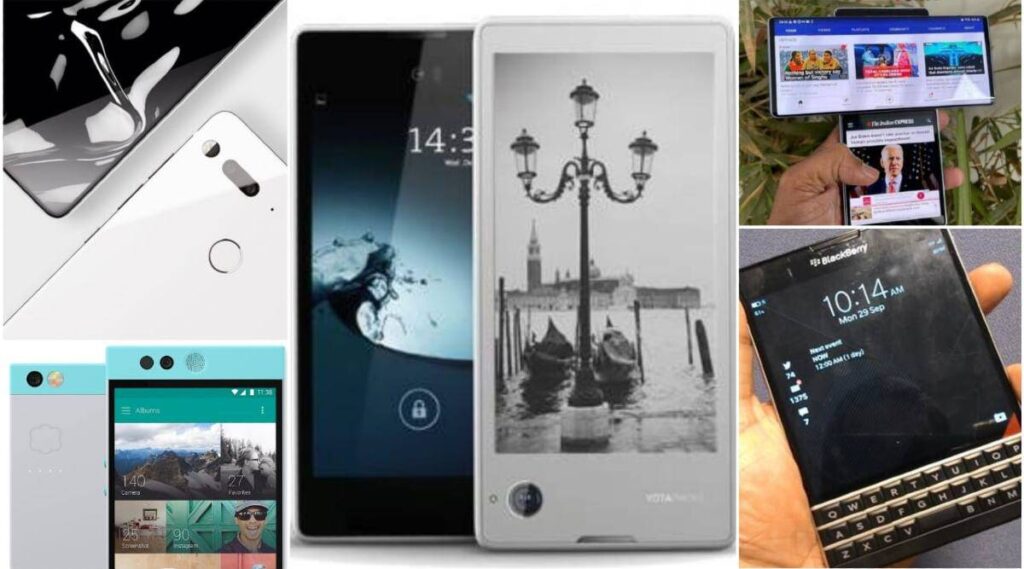Here are five smartphones that brought innovative design to the table before the Nothing phone (1) and set themselves apart.
If you have bought a smartphone in the last few months, odds are it might not be drastically different from the phone you used in the past. More broadly, the blinding pace at which phones are launched without significant innovation is now being noted by insiders and consumers. With the launch of the Nothing phone (1), however, the industry hopes to see ‘freshness’ in the smartphone segment, which started to look stale and unexciting. The distinctive-looking Nothing phone (1) from an upstart company by former OnePlus co-founder Carl Pei has a translucent back with hundreds of light-emitting diode (LED) lights that function as notifications.
Starting at Rs 32,999, the Nothing Phone (1) isn’t exactly a flagship smartphone, but for Pei, the intention was always “to make tech fun again.” With Nothing phone (1) hitting the Indian market soon, we thought of revisiting five smartphones in the past that were fresh and offbeat in their approach.
LG Wing
Not many remember the LG Wing, the South Korean major’s last big phone release before it announced the closure of its smartphone business. LG Wing came with a unique swivelling design and a built-in gimbal, but upon its launch, it got the tag of “too unique” and “bizarre”, which hurt its commercial prospects. Its swivel design and the dual-screen brought something fresh to the phone market. In fact, with that rotating front display and smaller display underneath, it opened new use case scenarios that weren’t possible with traditional smartphone designs. You could play a game and watch Netflix at the same time, or use the bigger display for email while using the bottom display for texting or social messaging. Yes, it was a little offbeat and expensive at $1000, but it certainly was a conversational starter.
Nextbit Robin
Designed by HTC’s ex-designer Scott Croyle, the Nextbit Robin was a crowd-funded Android smartphone that wanted to put the cloud at the centre of the experience. Its design was fresh, and its mint-coloured plastic body was eye-catching. It was a pretty phone, had solid specifications on paper, and ran a different kind of software. The Robin came with 100GB of cloud storage, which was deeply integrated into the Android-based OS. The Robin’s play was that it would automatically upload and download apps and other data to Nextbit’s servers as needed. But despite all tall promises and a team of veterans in the tech space, the $399 Robin failed to make any mark on the smartphone market. In fact, after a year of releasing the Robin, the start-up was acquired by Razer, the PC gaming company. Nextbit’s influence was later seen when Razer launched the two generations of its gaming phones, but the differentiated experience was missing.
Yotaphone
Russian broadband provider Yota made a splash back in the day when the company brought smartphones with e-ink displays to the market. The Yotaphone series was different in approach, thanks to its rear e-ink screen. The phone looked like a standard phone from the front, but the back had an e-ink display, the same screen technology that Amazon’s Kindle e-book reader uses. That secondary e-ink display allowed users to read messages or see the time without draining the battery. Although the first dual-screen Yotaphone was a novel idea in 2013, it was let down by a lack of apps and poor build quality. The second and third-generation Yotaphones were more polished, but the brand wasn’t able to market those phones in major smartphone markets. Despite Yota wanting to give users a taste of a different world through its Yotaphone series, it’s a pity that consumers weren’t interested in trying new and unique devices. That led to the failure of the brand Yota, which eventually went bankrupt in 2019.
BlackBerry Passport
At the time when the iPhone 6 Plus and Galaxy Note were rocking the smartphone market, BlackBerry tried to make a phone with a square 4.5-inch screen and a physical keyboard — it’s the size of a Canadian passport, hence the name ‘Passport’.’ It was a brave attempt to launch a smartphone that was unconventional and quite unique, and that too from a company that catered to business users. But BlackBerry failed to convince many phone buyers to put their cash on an odd-shaped smartphone that was far from mainstream. Mixed reviews from critics and the fact that BlackBerry had already lost its core audience to other brands, particularly Apple, worked against the Passport. That being said, the BlackBerry Passport will always be remembered as a clutter breaker despite its commercial failure.
Essential Ph-1
Essential Ph-1 was hyped as the next big thing in the smartphone market, but it received a lukewarm response from consumers. Not many people know that it was Essential (and not Apple) that put the screen notch displayed atop its first flagship. Apart from minor gripes, the Essential Ph-1 wasn’t a bad phone, but those who used the phone said it was a rushed attempt to make a phone for enthusiasts. More than the flaws the phone had, the biggest thing that worked against the Essential brand was its founder Andy Rubin, the man who co-created Android before Google acquired it. Growing allegations of sexual misconduct (Rubin denied those claims) – and despite securing millions of funding, Essential hit with a bad public image. This led to the cancellation of the Ph-2 and eventually the full shutdown and closure of the US-based company. Later, Carl Pei’s “Nothing” acquired the branding from Andy Rubin’s dead startup. It’s unclear what Pei’s new company plans to do with the Essential brand.

Source:indianexpress.com

